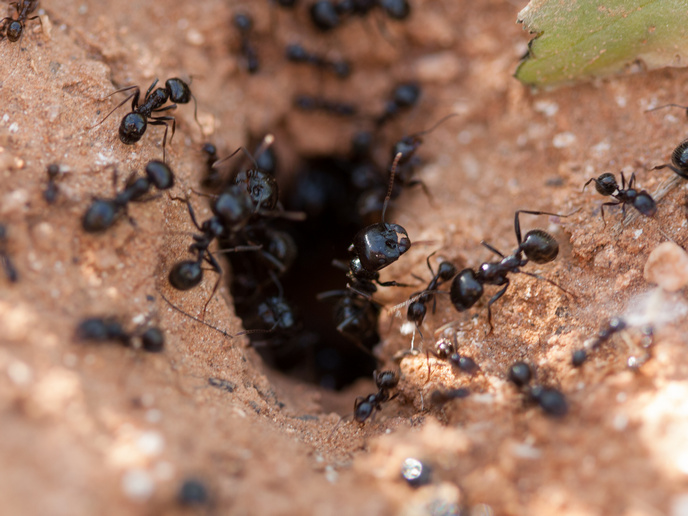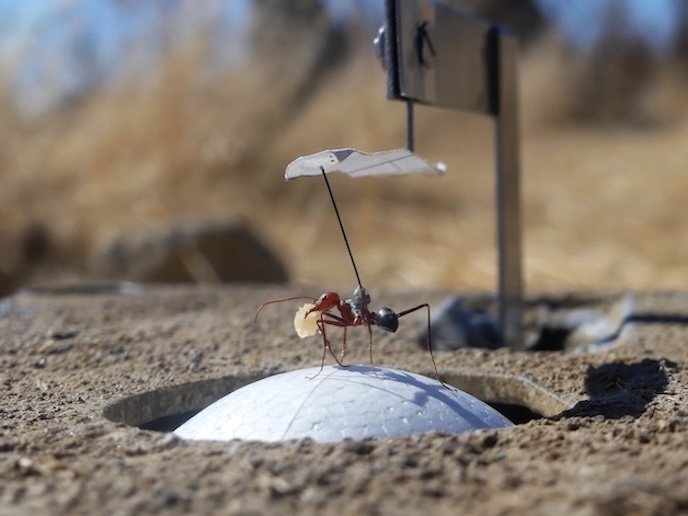How dung beetles’ innate compass uses navigational cues
The dung beetle, which feeds on animal manure, forms dung into a ball and rolls it away in a straight line to escape its competitors at the dung pat. The beetle has been found to use navigational cues, such as the position of the Sun, Moon and stars, and to combine these with other cues to steer straight. “Dung beetles are a wonderful tool to understand navigation,” says UltimateCOMPASS(opens in new window) project coordinator Marie Dacke, professor of Sensory Biology at Lund University(opens in new window), Sweden. “They have the hidden ability to navigate in a large range of environments and have a much bigger toolkit to solve navigational challenges than we expected.” “They are active at any time of day, but we discovered that these clever beetles can also navigate at night,” she explains. “We identified that they use the polarisation patterns around the Moon and the faint light of the Milky Way to navigate.”
Combining navigational cues
“We isolated these navigational cues one by one. At first, we did not understand how the beetle combines them or what they do if they’re in a forest where the Sun is frequently hidden from view.” But Dacke notes: “Beetles completely change how they read the environment depending on the directional cues that are available at a particular moment in time.” “When the Sun is not reliable, they use the wind to navigate instead. And when the Sun is reliable, they don’t use the wind because it’s harder to orient to.”
Remembering where to go
The team, comprising entomologists, neurologists, ethologists, imaging experts who describe the insect eye and experts in modelling, investigated how long the insects remember where to go. One experiment had beetles moving a short distance so that they set their direction. The insects were then wrapped in plastic for longer and longer periods. When unwrapped again and released under the open sky, the insects’ orientation direction revealed the stability of their memory. Another laboratory experiment put the beetles on ice, as this interrupts neuronal processes. “Then they forget the way faster,” Dacke remarks. She adds: “With these and other experiments, we could see that memory falls away but direction is remembered for longer than distance.”
Monitoring the insect brain
The team’s skilled electrophysiologists inserted tiny electrodes into individual neurons of the insect brain’s navigational centre to record and measure neuronal activity. “We followed the different neurons – thousands of them – as we can image them. We imaged the compass centre of the animals, tracking individual neurons to know how they connect,” Dacke explains. “These [neural] networks are modified continuously,” she says, noting they adjust to changing conditions by combining different cues.
Computational models on insect brains
Computational models were devised combining the information on dung beetle neurons and those of other insects, whose neural networks have been mapped by other scientists. “The beauty of navigation is that the circuits are quite similar between the insects,” Dacke remarks. This is also known from EU-funded projects on ants, such as EMERG-ANT, and moths, notably MagneticMoth. They show that navigation is important for insect pollination and biodiversity – animals that cannot navigate cannot survive. Understanding how cues are combined could have wider uses, for example, in robotics or driverless cars where massive amounts of information need to be combined to steer in the relevant direction, according to Dacke. It could also help design complex navigational systems that cannot be disrupted, she suggests. “GPS is a man-made system that someone can turn off, but systems that rely on natural inputs would still be able to function.” The UltimateCOMPASS project was funded by the European Research Council(opens in new window).







